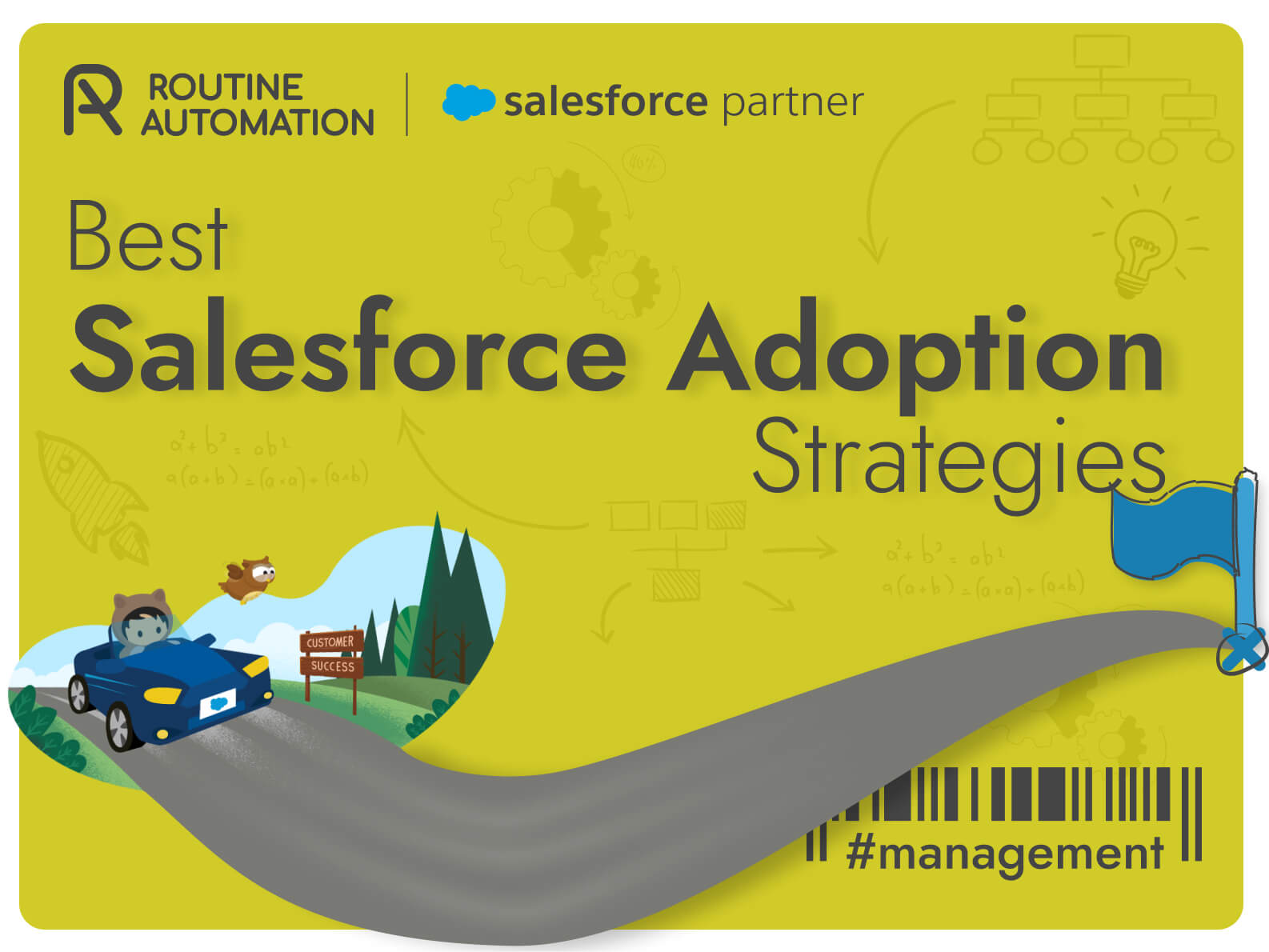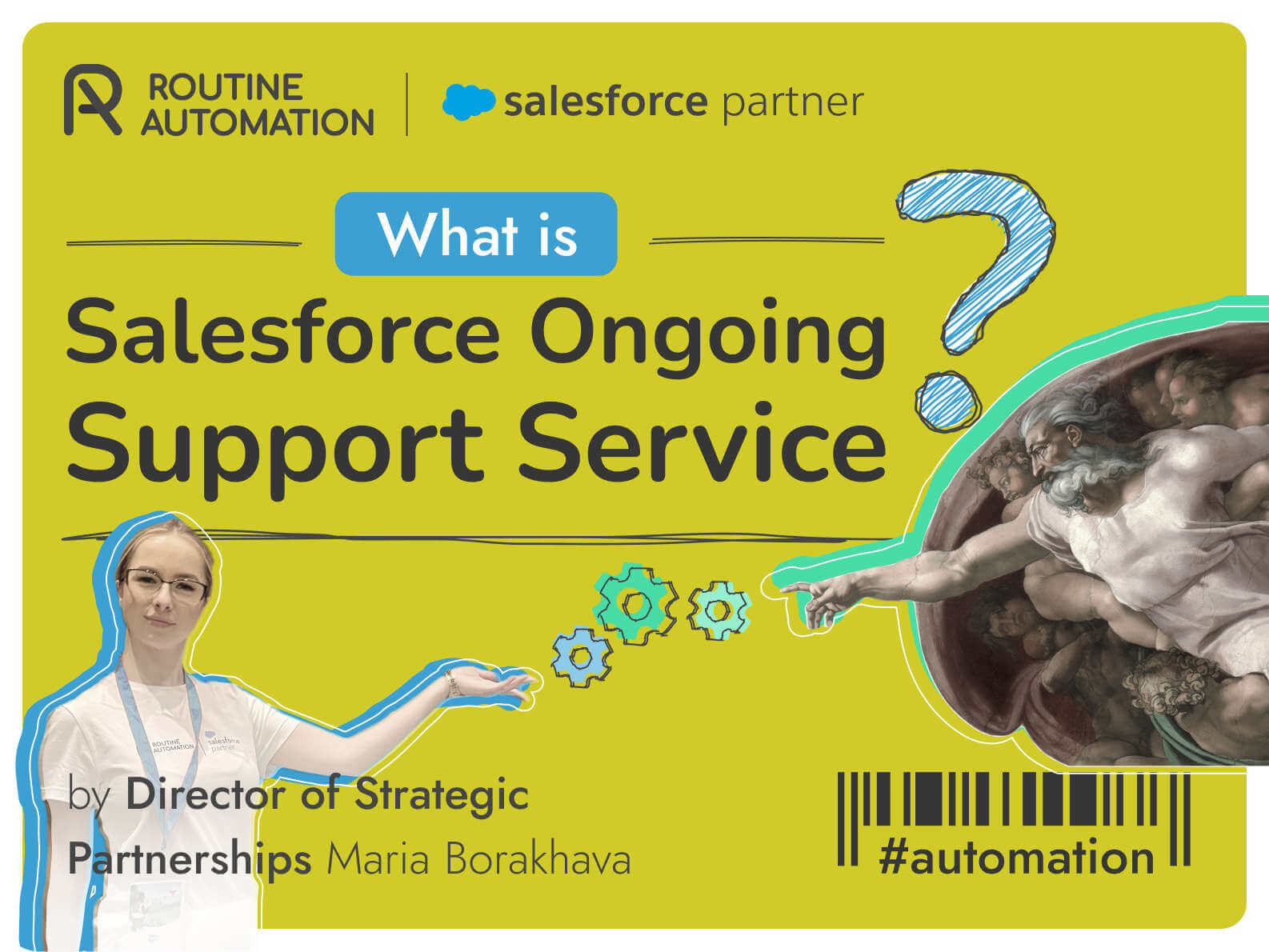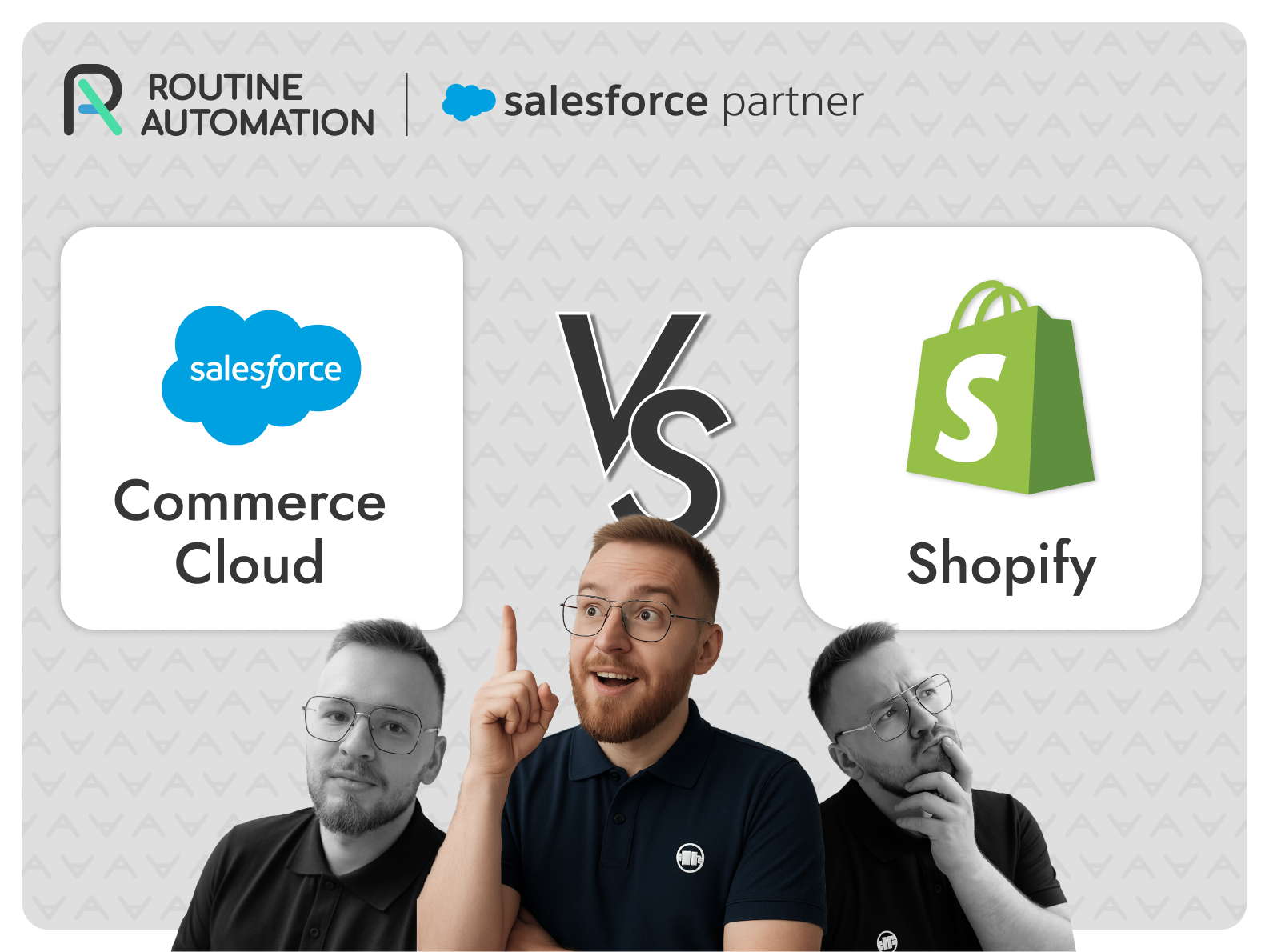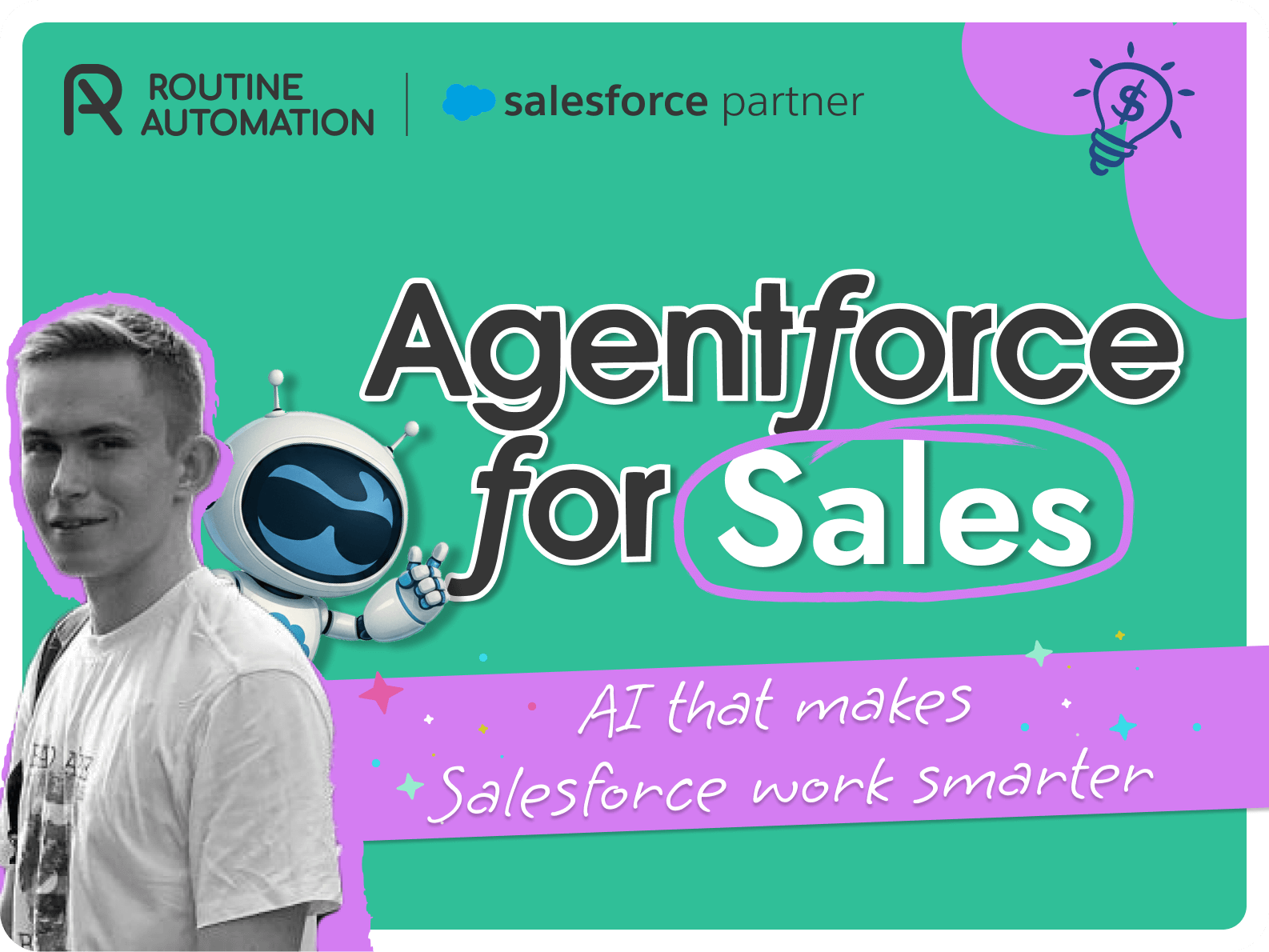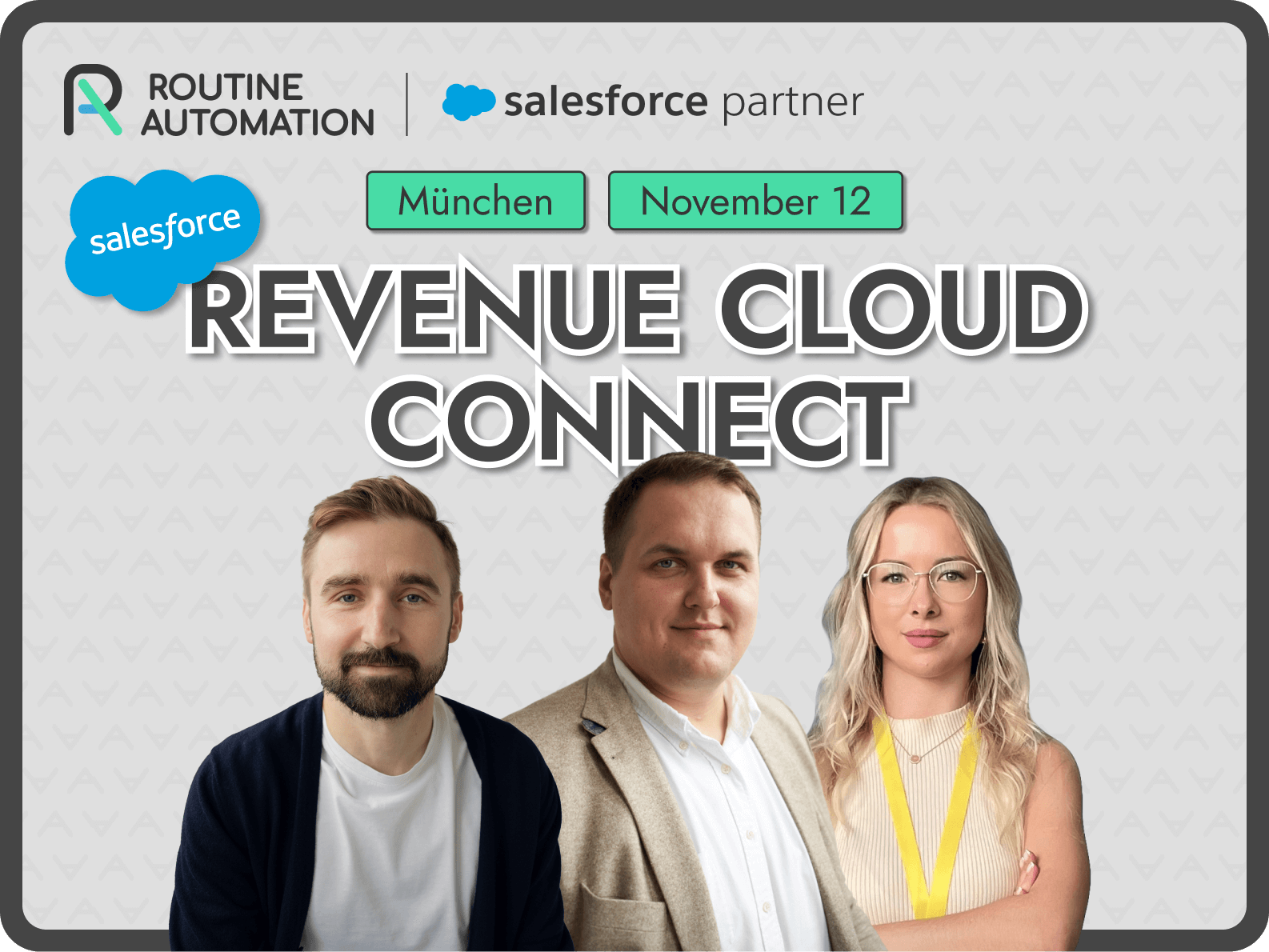5 Hands-on Examples of Low-Code Application Development with Salesforce

Low code practical approach to development within the Salesforce ecosystem has emerged as a game-changer for businesses seeking to streamline their operations. This approach accelerates application development and offers a competitive edge in today’s digital landscape.
In this article, Head of Customer Success and Account Management Vera Stepanovich shared 5 business advantages of using low code on the Salesforce platform. Also, our experienced Senior Salesforce Developer Andrey Melnikov listed 5 hands-on low code possibilities for clients leveraging this approach.
What is low code development?
Low-code and no-code platforms use simple interfaces and user-friendly features to build software. These platforms include visual builders and provide a wide selection of UI objects, pre-built templates, and third-party integrations. Low-code application development framework options rely on graphical user interfaces (GUIs) that make it possible for users to design complex applications, without ever having to learn complex computer languages. It’s like Legos for software — someone gives you a bunch of cool building blocks and a lot of creative freedom. This is the easiest solution to eliminating the development middleman and making it possible for non-coders to establish themselves as application developers.
5 benefits of Salesforce low-code development

Lower opportunity cost
The more code you write, the higher the opportunity cost. If the company opts for low-code approaches, it reduces the manual work required for software upgrades. Low code is not a panacea, but it’s a tool to help us focus on the stuff that matters, the stuff that differentiates products. If your company already has the Salesforce platform, then additional use of low code tools is probably a good choice for your situation.

Well-suited for MVP
MVPs (Minimum Viable Product) is the most popular Salesforce use case. Its strategy is to use the least amount of time and money to obtain that validation on the road to product-market fit. What does that all mean? Don’t waste your time building a fully customized and feature-rich app without knowing if anyone will actually use it. Low-code accelerates the “build-measure-learn” feedback loop that is the foundation of the MVP.

Reduced developer involvement
You don’t want your engineers to waste their time on simple tasks, it’s better to invest their time in higher-value features. Businesses can cut back on the time associated with development cycles by not having to send every new development request to overwork IT departments. Instead, individuals across all departments and teams can take responsibility for developing their own applications, freeing up IT for other vital tasks.

Many options for integrations
Salesforce is already used in many companies and it’s easy to get the ball rolling on its low-code features. Business and accounting teams are already familiar with Salesforce, so it has a lower barrier to entry than lesser-known names. It’s not all about the business community though. Salesforce acquired Tableau and Slack, so that solution has some serious street cred with engineers too. It’s also nice to have one platform to rule them all.

Trailblazers’ community support
This community offers a supportive network of peers and experts who can provide guidance and offer insights into low code development. They have a Trailhead interactive training system with interactive learning modules to gain practical experience with low code development on the Salesforce platform. This practical approach helps everyone grasp concepts more effectively.
Taken together, these benefits save businesses time, effort, and the budget associated with IT solutions. It’s time to explore the 5 practical use possibilities of Salesforce low-code tools that automate business processes with just a few clicks.

5 Hands On Examples of Using Salesforce Low Code Applications

The approval process for records in Salesforce is automated. Every step of the approval process is outlined in an approval process, along with who should be contacted for permission and what needs to be done at each stage.
Examples:
A) Setting up an Approval Process
When sales and service representatives ask for any action, assign permission requests and automate them
B) Marketing Campaign or Event Approval
Marketing departments are often launching different campaigns and coming across trade exhibitions and other events that offer chances for promotion. Notifications or emails may be sent to the submitters as well as the management each time an event is accepted or denied.

You have control over the process clients go through when they get in touch with you for assistance. You could track down every piece of client information and address problems with a case management system. Your team’s response will depend more on whether they have access to consumer data and the automation tools than on how much they want to help. By automating procedures and consolidating data into a single CRM, this helps your employees handle cases more quickly while saving your company money — even as the volume of cases rises.
Examples:
A) Serve customers via the channel of their choice
An excellent case management system interfaces with all channels natively, allowing workflow automation and all of your client data to work together to address problems quickly. no matter how or when a customer contacts you.
B) Customize the support case lifecycle
Depending on the plan that each client chooses, your support team may have separate service level agreements (SLAs) with each of them. While consumers with standard service might only have access to self-service or email assistance, those who pay for premium service might have live agents available to them around-the-clock.

This is the methodical procedure for following, interacting with, and developing prospective clients (leads) as they move through the sales funnel with the goal of turning them into devoted patrons. By having a somewhat distinct understanding of B2C and B2B brands, you can keep track of all the important details.
Examples:
A) Detailed Lead Records
Keep thorough lead profiles with contact details, business particulars, and interaction history. At the same time, leads are easily converted into account contact opportunities.
B) Timely Engagement
The sales representative gets notified and responds to leads right away. Your focus demonstrates your concern. Provide timely information, analysis, or special offers to prospective customers that will actually benefit them.

Salesforce offers a variety of dashboards and reports. A report serves as a blueprint for organizing and presenting data in a standardized manner. The report is shown as a graphic or tabular chart. It is groupable and filterable. The reports can also be arranged in a folder. This folder can be set to be shared, hidden, public, or occasionally read-only by users.
Examples:
A) Dashboard for the Customer Service Supervisor
It is the best way to oversee the customer care departments of a company. The top-performing agents, the age of outstanding cases, the number of open cases sorted by priority, and the time it takes to resolve issues are just a few of the metrics it offers.
B) Report Scheduling
Up to five reports are available for subscription; after that, you will receive them via email. You can also choose to receive the emailed report on a specific day and time.

Before allowing a user to save a record, Salesforce solutions may check to see if the data they have submitted satisfies specific requirements. The rules are configured by Salesforce administrators as statements that function as yes-or-no questions, to which all of the answers must be negative. If not, the administrator will explain in an error message what needs to be done for the user to fix the record before they can click “Save” once more.
Examples:
A) Automating intricate computations
It can decide which clients qualify for a re-enlistment incentive or any other assistance. Regardless of their level of technical proficiency, business users can update their spreadsheets by simply dragging and dropping formulas or reusing templates.
B) Same Contract Records
If you have multiple business units that share the same contact records, you might build an app that highlights the information as well as details from cases and opportunities. Also you are able to get creative by using Lightning Flow to deliver a solution using point-and-click tools and not code.
The bottom line: the Salesforce low code platform is agile and available
Simply put, the Salesforce low code solutions give users everything they need to design, develop, integrate, deploy, or find solutions that optimize their business. While business challenges can be increasingly complex, the solutions are actually simple. Who can develop software applications? With the Salesforce opportunities and Routine Automation assistance, the answer is “anyone.”





